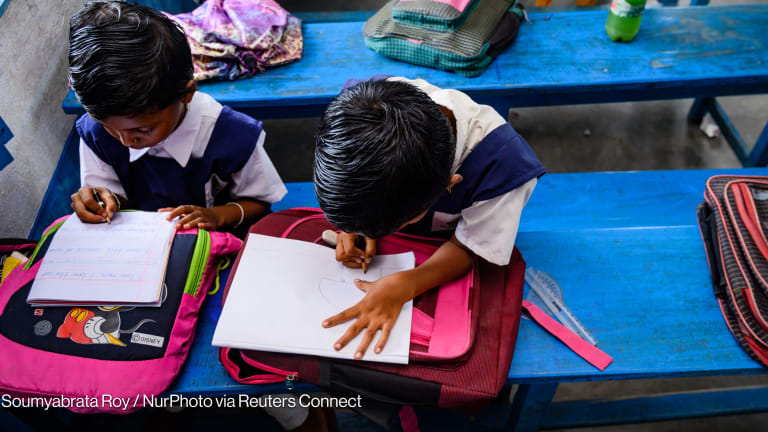
SEATTLE – About a year ago the Bill & Melinda Gates Foundation decided to do an internal reorganization to experiment with better aligning some of its focus areas and try to have a more holistic approach to helping lift people out of extreme poverty.
Rodger Voorhies was chosen to lead the effort and is now the head of the global growth and opportunity division, which was created by merging the foundation’s agricultural development, financial services for the poor, gender equality and water, and sanitation and hygiene teams into one department. Devex spoke with Voorhies earlier this month to get the latest on the division.
The conversation has been edited for length and clarity.
Can you tell me more about the reasons for the reorganization and how your partners reacted to this shift?
At first, our partners thought, “Wow, the Gates Foundation is finally going to focus on deep poverty issues, and they're going to join all these strategies together and holistically center around the poor person and all the things they need.” I kind of resisted that for the first year. And the reason I resisted it was it was a lot to do with my experience in the field.
More on UNGA 2018:
► Guterres launches new plan for SDG financing, as private finance takes the spotlight
► UN warns of worsening famine in Yemen
► Q&A: A new, UN-backed global fund to support former child soldiers
There's a tendency in development to have a replication approach to impact. That sometimes means we solve a third order problem, one that is really obvious on the surface, and then we say, “OK let's replicate that in lots and lots of locations.” And that kind of broadening out before we really go deep into the first order problems, the systemic issues, sometimes leads us to do a lot of things that have the appearance of impact but lack the power long-term.
We needed to get really clear on two questions: How does your strategy help build greater resilience to buffer people from falling deeper into poverty? And how does your strategy then help them rise out of poverty and grab opportunities?
Unless we understand that end-to-end, in a deep way, in financial services for the poor or agriculture, it's going to be really hard to find out where the right level of overlap is between those two things.
So let's get really clear of how those two things work in the deep siloed way, and then look at places where we're starting to get traction on the country level, where we say we can now look at FSP and agriculture together, which is what we are starting to do.
How do your trips to the field differ now, leading this new portfolio, as compared to when you led the FSP strategy at the foundation?
So part of it is just that I have a broader scope, when I'm talking with either government leaders or key development partners, to actually be able to look across those relationships and think about how the goals fit into the different components that we're working on together.
I'll give an example. A lot of countries are wrestling with agriculture. And they're asking: Is this a nutrition problem? A food security problem? An economic jobs creation problem? And countries sort of jump back and forth depending on what's the most pressing and urgent problem.
In this role with global growth and opportunity, it's fun to have this one mandate that we believe everybody benefits from an economy that includes everybody. It allows us to have much richer deeper conversations that don’t feel like Gates Foundation coming in and saying, “OK this is my priority. Please adopt it.”
Since taking on this new role, you’ve had to learn about a lot of new areas, and worked to bring several different teams together. What have you learned so far?
One of the things that was really hard for me, as I moved from being really deeply engaged in one area to overseeing a lot of areas that are really different, is that I spent a lot of time up front trying to learn to be a deeper expert in each of those areas. And I think that caused me to kind of bounce around in terms of how I showed up.
I would have spent more time thinking structurally about how we work together. And then secondarily, asking: What's the shared culture we want? And then thirdly, what are the systems that are in place to allow a deeper technical exchange between the teams? Rather than me trying to go individually learn more.
I’ve been giving a lot of thought to how to foster connections between technical experts in different areas within the division. I’m hoping to foster these types of connections by incorporating cross-cutting topics into my staff meetings and communications, rather than going straight into operational issues which might at first glance seem most relevant for diverse teams, and listening closely to program officers on the frontlines and providing them with formal opportunities to be heard.
Ultimately, we are dedicated to building an organizational structure and culture that fosters the latest ideas, understands how to apply the latest research findings, and then — working closely with our partners who are in the field — supports innovations in delivery that improve impact.
NCDs. Climate change. Financing. Read more of Devex's coverage from the 73rd U.N. General Assembly here.








